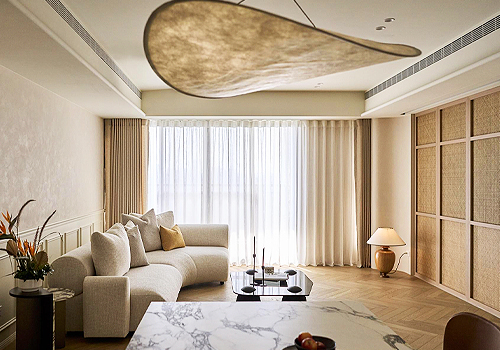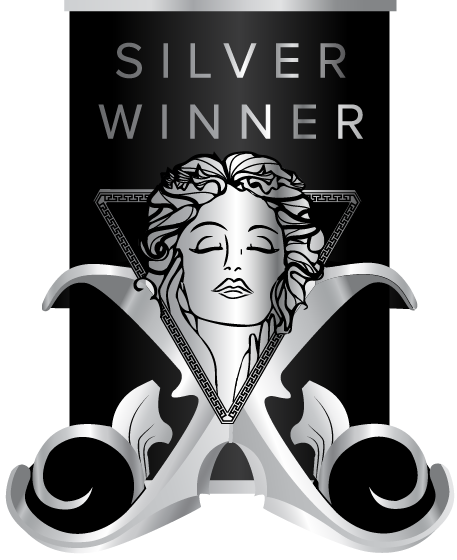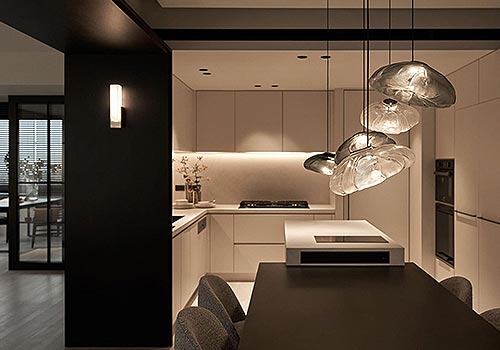Interview
Chia Yu Lin
1 Congratulations on winning the MUSE Design Awards! Can you introduce yourself and share about what inspired you to pursue design as a career?
Hello everyone, I am Chia Yu Lin from ININHOME Co., Ltd., and it is a great honor to receive the MUSE Design Awards. In recent years, ININHOME has primarily focused on residential interior design. I have always believed that space is not merely a functional container but also an expression of lifestyle and emotion. My decision to pursue design as a profession stems from a constant exploration of how to make people truly feel the warmth and aesthetics of home. Design connects materials, light, and human experiences, ultimately shaping the way people live. Seeing users feel relaxed and at ease in the completed space is my greatest motivation to keep moving forward. This recognition from the MUSE Design Awards is not only a celebration of my work but also a reminder to maintain curiosity and passion, treating design as a dialogue with the world. Moving forward, I will continue to uphold the philosophy of combining aesthetics with comfort to create spaces that touch people’s hearts.
2 What does being recognized in the MUSE Design Awards mean to you?
Winning this award is not only a recognition of my work but also a responsibility. It reminds me to continuously uphold creativity and professionalism to bring forward more meaningful projects. At the same time, it serves as motivation to further explore the connections between people, space, and life. For me, this honor is more than just a trophy—it is a source of strength. It reinforces my belief that the true value of design lies in creating beauty that people can genuinely feel. I will continue striving to create work that resonates deeply and meaningfully with others.
3 How has this achievement impacted your career, team, or agency, and what opportunities has it brought so far?
This achievement has brought tremendous recognition to my career, my design team, and ININHOME Co., Ltd. It has elevated our visibility on the international stage and marked an important milestone, inspiring us to diversify our projects further and expand our reach globally.
4 What role does experimentation play in your creative process? Can you share an example?
Experimentation plays a vital role in our creative process, serving as a pathway for exploration and breakthroughs. It allows us to move beyond problem-solving and pushes us toward creating new possibilities. In one residential project, for instance, we explored combining materials with contrasting textures. By carefully balancing proportions, light, and construction techniques, we crafted a space that felt both modern and serene—becoming one of the homeowner’s favorite aspects of the project.
5 What's the most unusual source of inspiration you've ever drawn from for a project?
I believe inspiration is drawn not only from interior spaces but also from the broader context of architecture, the environment, and the client’s individuality. In one residential project, we considered both the interior and the unique features of the building and its surroundings. By adopting a “bringing the outside in” approach, we extended mountain and river views into the interiors, transforming the home into a viewing platform. We also took into account the client’s cultural sensibilities and lifestyle. For a homeowner with a refined appreciation for art and aesthetics, we used weathered stone to echo the mountain textures and metal lines to capture the flow of light. The result was a home that harmonized with nature while reflecting the owner’s personality. Ultimately, the project embodied a unique architectural language enriched with the emotional depth of the client’s life—allowing them to “live inside a natural canvas” and draw inspiration from it every day.
6 What’s one thing you wish more people understood about the design process?
The part of the design process I wish more people understood is that it is not solely about “beauty,” but about shaping a home’s unique character to reflect its occupants. In every project, we prioritize daily living patterns and circulation. While aesthetics are essential, the true value lies in creating spaces that serve everyday needs and resonate with residents. Often, it is the small details noticed during conversations with clients that reveal the real needs of a space. These micro-interactions ensure the result is not just a design, but a home that embodies the personality and lifestyle of its occupants.
7 How do you navigate the balance between meeting client expectations and staying true to your ideas?
I have always believed that design is not a one-way expression but a two-way dialogue. A client’s instinctive requests often inspire me, while my design philosophy introduces them to new possibilities. For instance, if a client emphasizes functionality, I concentrate on circulation and storage solutions, while also preserving my vision of spatial atmosphere through materials and lighting. The outcome is a win-win: clients enjoy a comfortable, practical space, and the design maintains its poetic qualities.
8 What were the challenges you faced while working on your award-winning design, and how did you overcome them?
When I first took on this project, the space conditions were far from straightforward. The trapezoidal floor plan, with its numerous partitions, turns, and beams, initially made the space feel fragmented. The challenge was to create a layout that felt fluid while still distinguishing public and private areas. Rather than concealing these structural elements, I embraced them as natural boundaries. Beams and turns became subtle markers that helped differentiate zones. In this way, the living room and adjacent study, though connected, were able to maintain distinct atmospheres through thoughtful circulation and structural cues.
9 How do you recharge your creativity when you hit a creative block?
One of the most meaningful ways I regain inspiration is by experiencing life. Traveling and observing the architecture and colors of different cultures—or even appreciating the layers and presentation of a meal—can all become part of my design vocabulary. Design, to me, is a reflection of life itself. By immersing myself in everyday experiences—whether through travel, cuisine, or conversations with clients—I often rediscover connections between people and space. Even small details, like watching natural light shift throughout the day, can spark fresh ideas. These moments help me overcome creative blocks and create design solutions that feel authentic and human-centered.
10 What personal values or experiences do you infuse into your designs?
Whether in residential or commercial projects, I believe design should never exist in isolation but must be closely integrated with the user’s needs. Only then can it achieve the right balance between beauty and functionality. For me, the core values are authenticity and livability. I place strong emphasis on material textures and light details, as they bring emotional warmth into a space. I also draw from personal experiences—observations of nature during travel and reflections on culture in daily life often serve as inspiration for my work. Every project is a reinterpretation of life itself. It is not simply about completing a design, but about translating my understanding of how people interact with space into environments that genuinely enrich their lives.
11 What is an advice that you would you give to aspiring designers aiming for success?
My advice to aspiring designers is this: don’t rush to pursue a “style.” Instead, focus on developing your ability to observe. Design does not begin with elaborate expressions but with small details—how light enters a room, how materials influence emotions, how people move through a space. These seemingly ordinary observations form the true foundation of design. Equally important is maintaining an experimental mindset. Many breakthroughs are born from trial and error. Don’t fear mistakes—they are an essential part of the journey. Be courageous in communicating with users, because design is not just self-expression but also listening and transforming. Only by truly understanding people can you create spaces with genuine warmth. And finally, never forget to enjoy life. Inspiration often comes from travel, food, art, music, or even the scenery on a casual walk. When you fully embrace life, you naturally bring that authenticity into your design.
12 If you could collaborate with any designer, past or present, who would it be and why?
If I could collaborate with any designer, it would be Kelly Wearstler. Her design language masterfully juxtaposes rawness with refinement, combining eclectic materials and colors to create bold and distinctive atmospheres. This resonates deeply with me. Her creative tension aligns with our recent focus on “bringing the landscape inside”—integrating the tones and textures of mountains and rivers into interiors, complemented by weathered stone and metal to capture the interplay of light throughout the day. At the same time, we prioritize circulation and the cultural sensibilities of users, ensuring that beauty and functionality coexist. I would love to collaborate with her in weaving together architecture, nature, art, and daily life into a living canvas that truly breathes.


